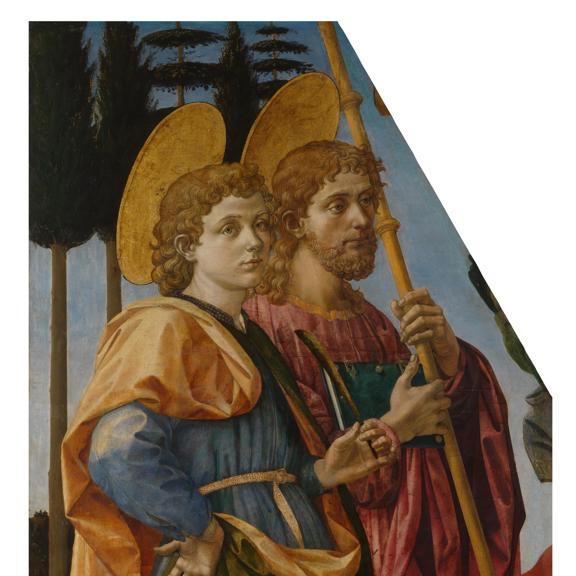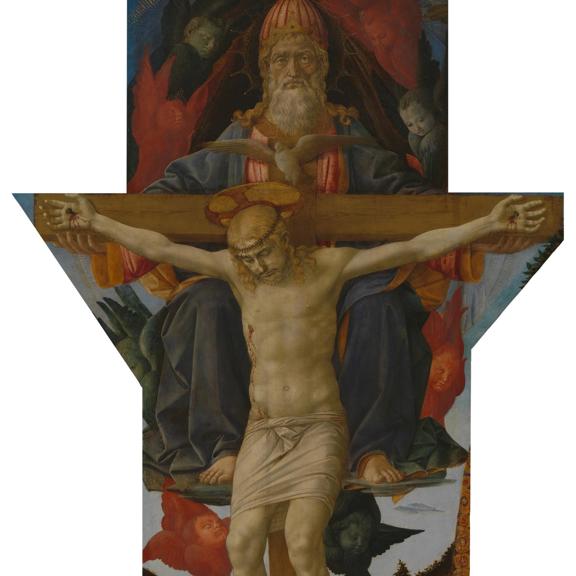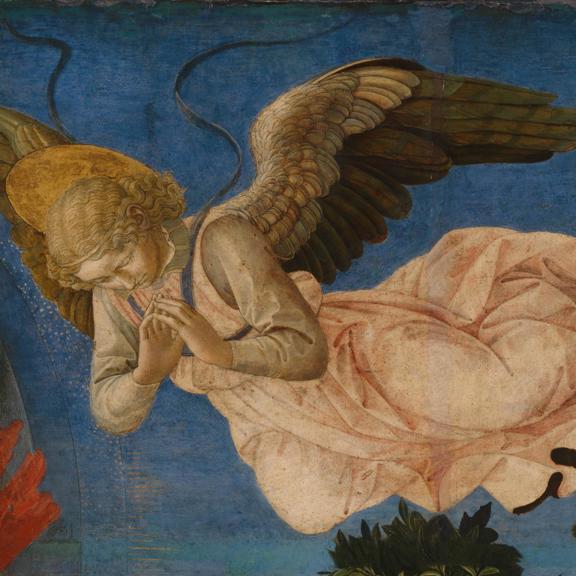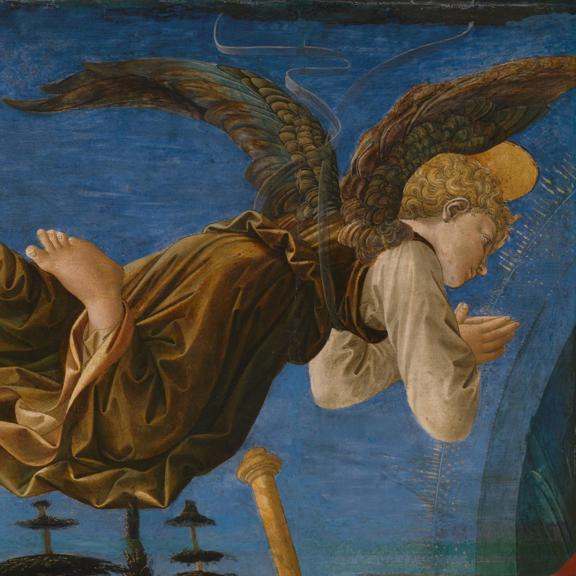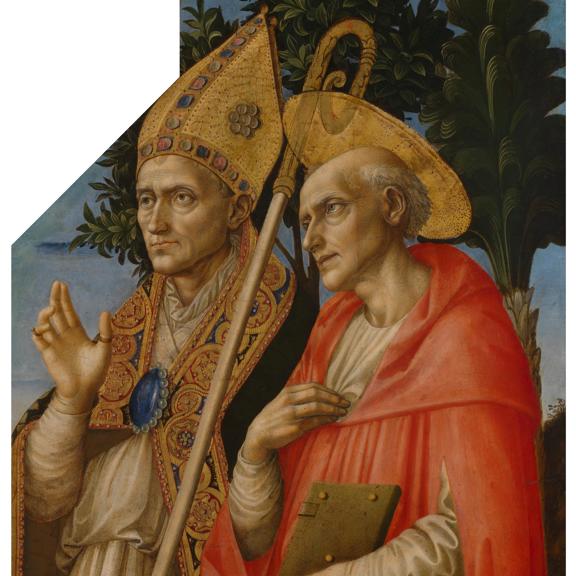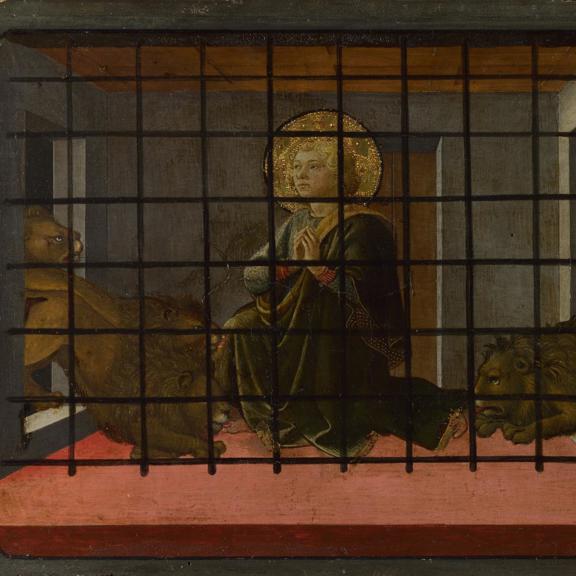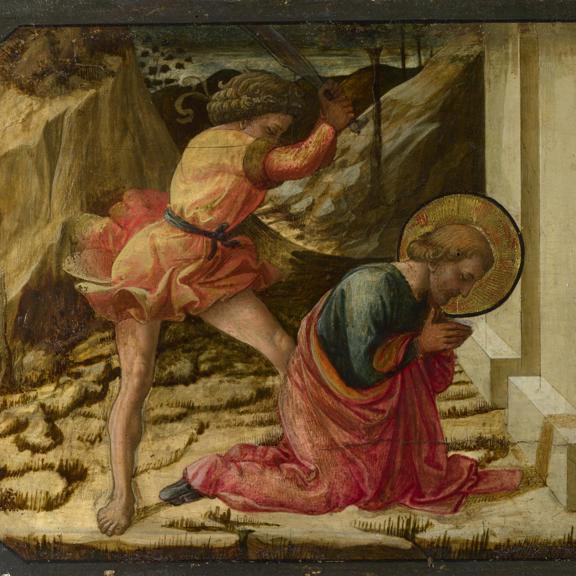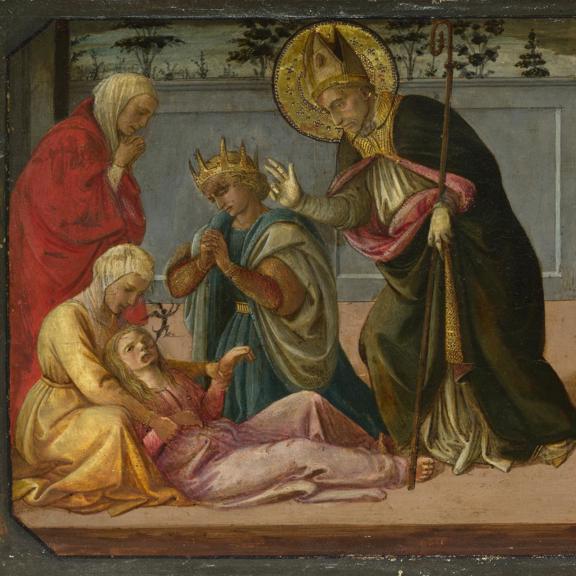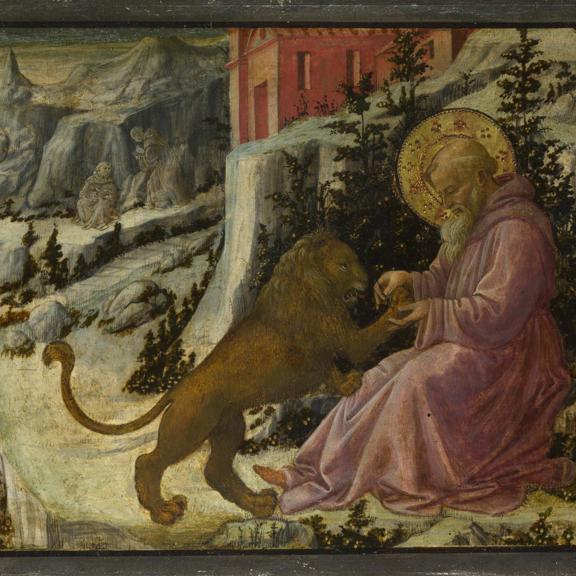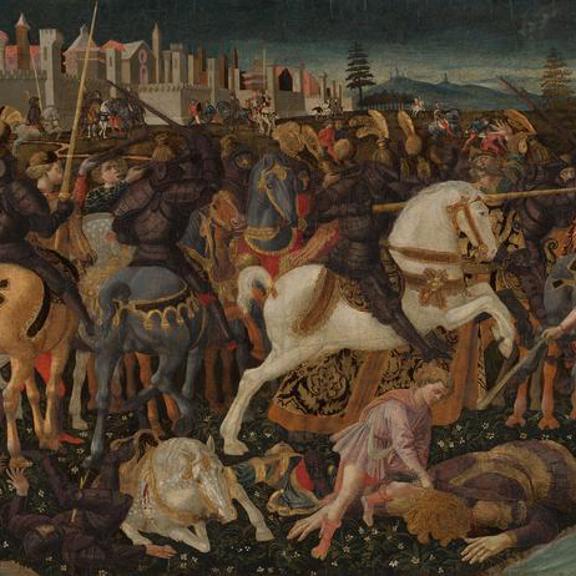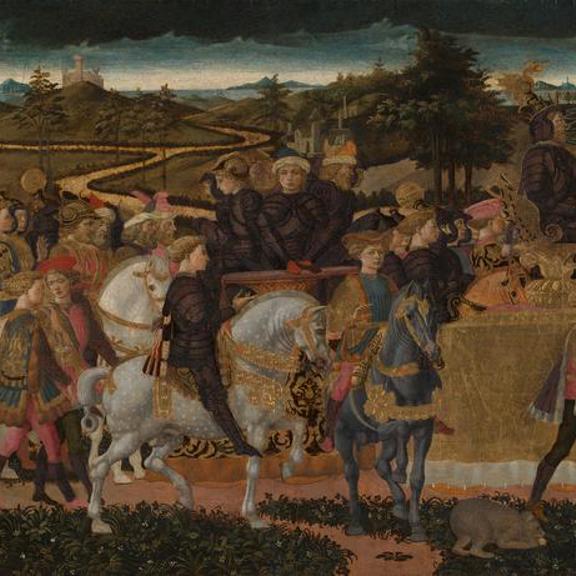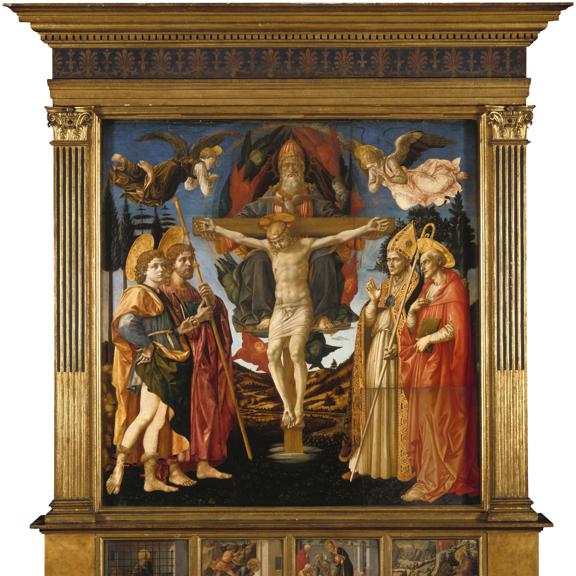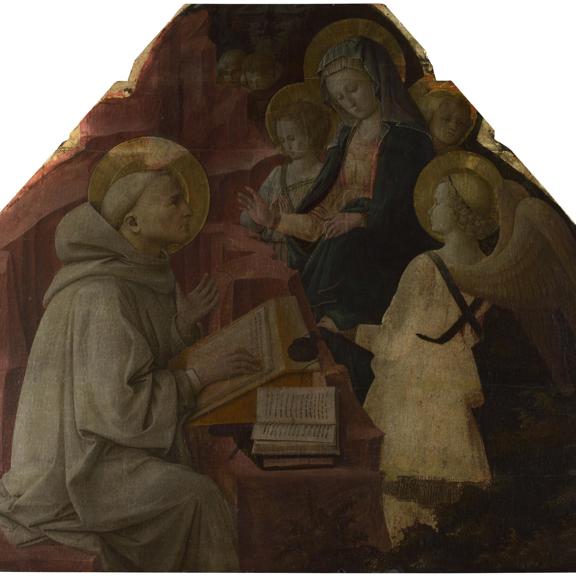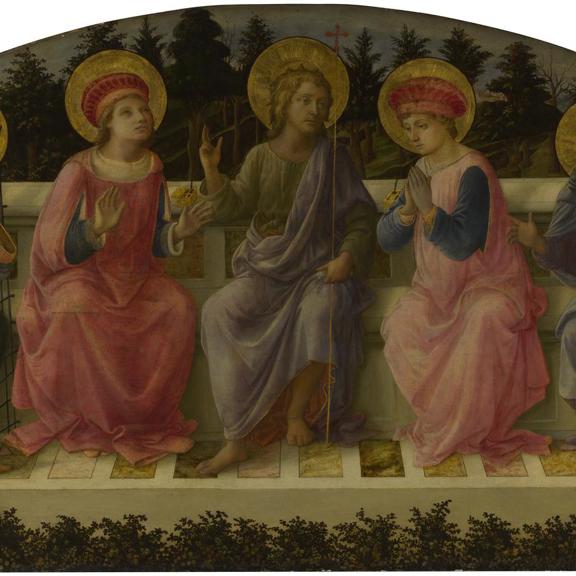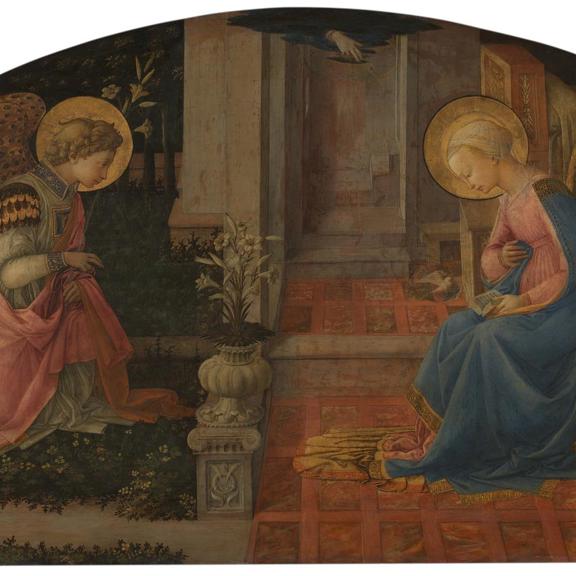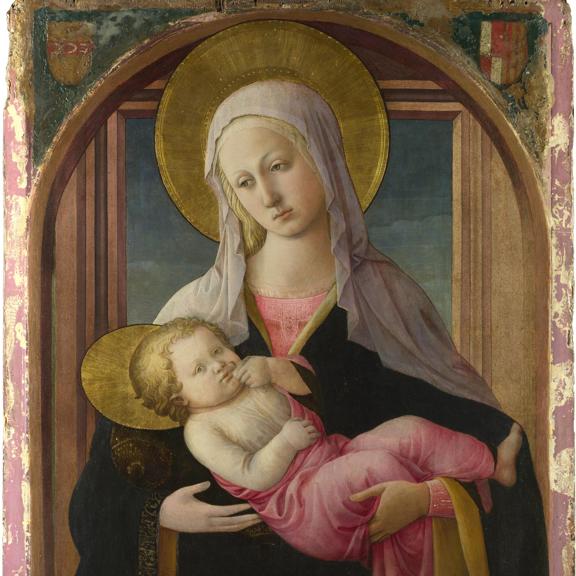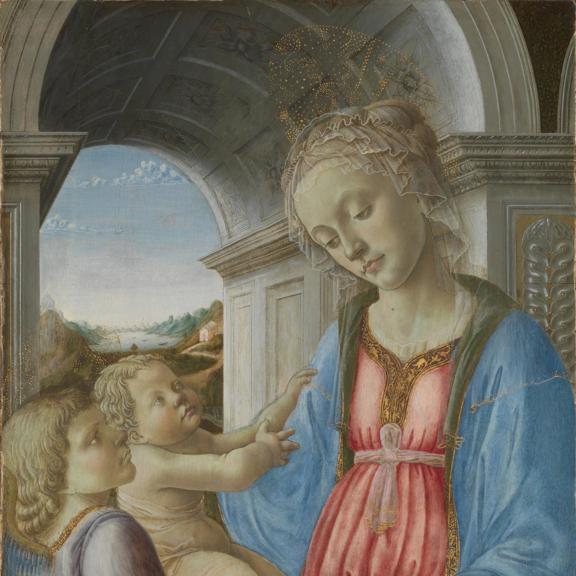Francesco Pesellino and Fra Filippo Lippi and Workshop, Saints Mamas and James
The Pistoia Santa Trinità Altarpiece
This large altarpiece – one of the few in the National Gallery which is almost complete – has had an eventful life. It was commissioned in 1455 from the Florentine painter Francesco Pesellino, and is his only surviving documented work. He died in 1457 and it was finished by Fra Filippo Lippi and his workshop. We know a lot about how and why it was made from the records of the confraternity who commissioned it.
From 1465 it sat on the high altar of the church of the Holy Trinity at Pistoia, but in 1793 the confraternity was suppressed and the altarpiece was taken apart, with the main panel sawn into pieces, and dispersed. Most of it was gradually acquired by the National Gallery and the altarpiece reassembled.
This is the earliest pala (an altarpiece with a single main panel) in the National Gallery.
This large altarpiece is extraordinary in many ways. Sawn into fragments in the eighteenth century, it was reassembled in the early twentieth, and is one of the few in our collection that is virtually complete. It’s our earliest example of a particular type of altarpiece, a pala.
Commissioned in 1455 by a confraternity of priests, it is Pesellino’s only surviving documented work. He died in 1457 before he could finish it, so it was completed by Fra Filippo Lippi and his workshop. Made for the high altar of the church of the Holy Trinity in Pistoia, it was taken apart after 1783 when the confraternity was suppressed. The main panel was cut up into five or six pieces and dispersed. Most were gradually acquired by the National Gallery, although one panel is owned by the Royal Collection and one fragment is lost.
Today we see The Trinity in the centre, with angels to the right and left. Saints Zeno and Jerome appear on the right, with Saints Mamas and James on the left. Only the lower right-hand side of the main panel is a modern reconstruction, as is the frame. In the predella we see an imprisoned Saint Mamas thrown to the lions, Saint James the Great being beheaded, Saint Zeno exorcising the daughter of the Emperor Gallienus and Saint Jerome with his lion.
Because of this altarpiece we have a fascinating insight into how medieval art was made and valued. From the surviving minutes of the confraternity’s meetings we know when and why a new altarpiece was commissioned, what it was to show and that it was to cost between 150 and 200 florins – a huge sum, perhaps partly due to the expense of using fashionable Florentine artists rather than local ones. We even know that Mamas was included because he was the favourite saint of Pero ser Landi, the confraternity’s treasurer. The confraternity was careful to see plans for each aspect of the work, and commissioned preparatory drawings – some of which survive – from Pesellino and from a maestro Lorenzo, who perhaps designed the woodwork. Landi made repeated trips to Florence to sign the contract and oversee progress.
By July 1457 Pesellino was too ill to continue; by the end of the month he was dead. There was then a battle between Pesellino’s widow and his business partner over the money paid and still owing on the partly painted panel. This was resolved by September 1458 when the panel was brought to Pistoia and the commission for finishing it given to Filippo Lippi. The whole ensemble was finally hoisted into place in June 1465, nearly ten years after it had been commissioned.
It must have looked radically new to the priests seated in the choir stalls: traditionally altarpieces were polyptychs but during the fifteenth century they changed to this new form, like the slightly later Martyrdom of Saint Sebastian. The whole idea of showing solid, weighty figures in a panoramic landscape was new and was to have a great influence on later painters, such as Piero and Antonio del Pollaiuolo.

